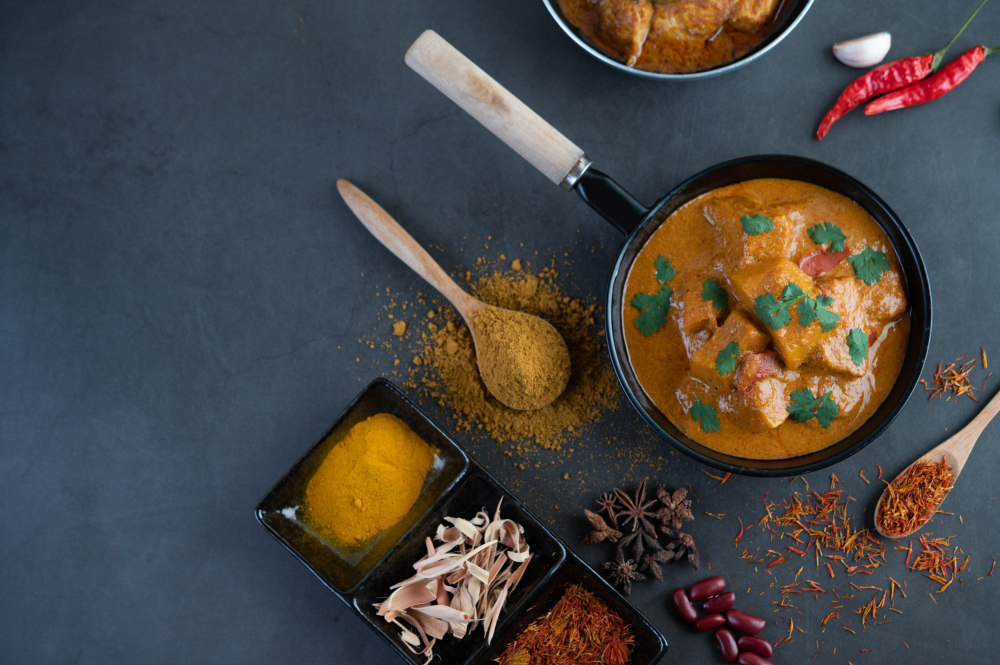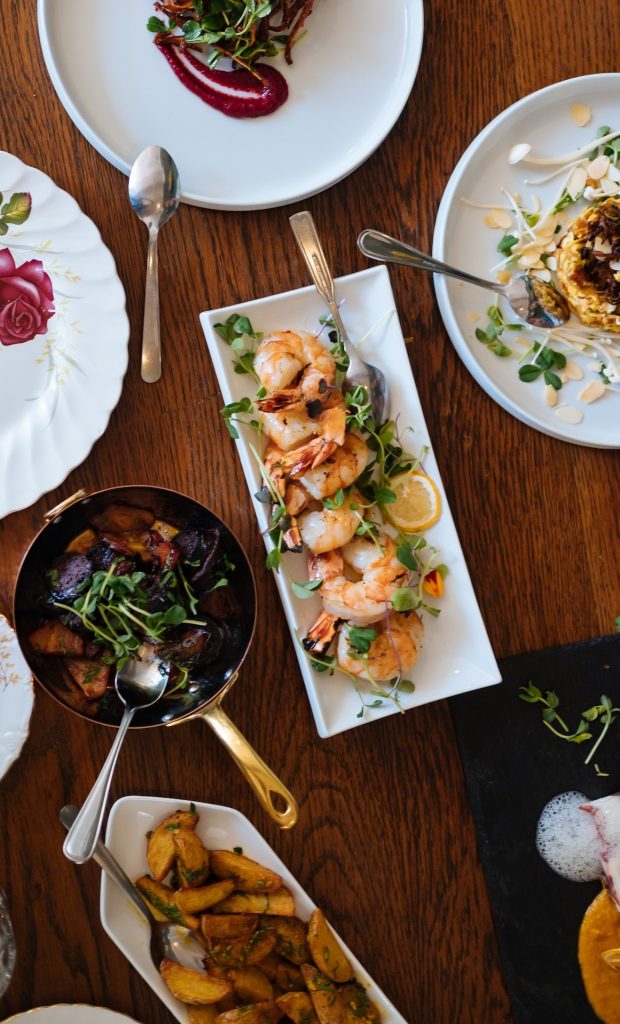Gaeng Khiao Waan Gai (Thai Green Curry with Chicken)
Green curry with chicken, also known as “gaeng khiao waan gai”, is one of the most well-known and well-liked Thai dishes worldwide. Thai locals and tourists alike love green curry because it is sweet, spicy, and flavorful. The pounded Thai green birds-eye chillies that make up the curry paste give this coconut cream-based dish its green colour.
Along with dried spices and shrimp paste, it also includes fresh aromatics, lemongrass, galangal, garlic, and shallots.
Like with many Thai foods, there is much debate regarding its origin. One of my teachers and a Thai culinary expert, Hanuman Aspler, has remarked that green curry is a very recent addition to Thai cuisine and that it probably started in the aristocratic households of Thailand in the 1920s.
Aspler discovered few, if any, references to green curry in his study of early Thai cookbooks; only red curry was mentioned. The usage of green chillies instead of red chiles to make green curry paste hasn’t always been the case, but it’s been speculated that Indian-style curries may have had something to do with it.
Gaeng khiao wan, which translates to “sweet green curry,” actually refers to the colour of the dish rather than its excessively sweet flavour. A genuine Thai green curry has a little sweetness and is quite hot.
THE BEST WAY TO MAKE THAI GREEN CURRY
If you’ve made the prik gaeng khiao waan in advance or you’re using store-bought curry paste, the dish comes together incredibly fast and cooks using the typical method for most curries made with coconut milk. For the coconut milk, use only those that solely state “100% coconut milk” as an ingredient, as opposed to those prepared with coconut extract and water.
Coconut milk emulsion breaks or “cracks,” with fat separating from the particles, as a result of cooking curry paste and coconut milk together until all of their water content has evaporated. The chillies, dried spices, and fresh aromatics’ fat-soluble volatile scents are now intensified as the mixture starts to fry in the coconut oil. The curry paste’s flavours are enhanced and carried over into the finished product throughout this process.
Season with fish sauce and palm sugar. Next, add the chicken and makrut lime leaves, followed by more coconut milk thinned with water. Stir everything together. The curry is cooked to a simmer.
Small Thai apple eggplants are added to the dish once the chicken is almost fully cooked. Along with the delicate chicken, the crunchy, slightly bitter eggplants offer a textural contrast and some relief from the saucy curry’s spiciness. The meal is garnished with thinly sliced makrut lime leaves and a handful of sweet (also known as Thai) basil leaves that are added just before serving.
This is a thick, rich green curry that may be included in bigger meals. It goes particularly well with cooked jasmine rice, fried fish or omelettes, or sour and spicy soups like tom yam.

Ingredients
- 1 ½ cups (355ml) full-fat coconut milk, such as Aroy-D, divided
- 10 makrut lime leaves (fresh or frozen), divided
- 2 tablespoons virgin coconut oil
- ½ cup homemade or store-bought green curry paste
- 1 tablespoon plus 2 teaspoons palm sugar
- 3 tablespoons fish sauce
- 450g boneless skinless chicken thighs, cut into small bits
- Salt
- 5 Thai eggplants, stemmed, quartered, and placed in a small bowl of water
- 1 packed cup of fresh sweet basil leaves (a.k.a. Thai basil)
- Cooked jasmine rice, for serving
Directions
- Mix 1/2 cup (120 ml) coconut milk with 1/2 cup (120 ml) water in a small bowl; keep thinned coconut milk mixture aside. Eight of the makrut lime leaves are set aside after the midrib has been removed and discarded. The final two makrut lime leaves are stacked, folded in half widthwise, and then thinly sliced.
- Combine coconut oil and 1/2 cup (120ml) coconut milk in a 3-quart pot and heat to a simmer. Stirring often with a rubber spatula, cook for approximately a minute or until somewhat thickened.
- Curry paste should be added, mixed thoroughly, and fully incorporated into the sauce by scraping the edges of the pan with a rubber spatula. Increase heat to medium-high and cook, scraping and stirring continuously, until the paste mixture starts to spit, which happens after about a minute and signifies that the water content has been cooked off and the mixture has started to fry in coconut oil. Return heat to medium-low, and cook for 5 to 6 minutes, until paste darkens slightly and the fat starts to separate from the curry paste. During this time, add the remaining 1/2 cup (120ml) of coconut milk gradually in 2-tablespoon (30ml) increments.
- Add fish sauce and palm sugar, and mix for about 30 seconds, or until palm sugar is completely dissolved. Chicken should be lightly salted on all sides. It should then be added to a pan with the whole Makrut lime leaves that were set aside and stirred to evenly distribute the curry paste mixture. Add the saved thinned coconut milk mixture and heat through. For about 10 minutes, cook the chicken, stirring regularly, until it is thoroughly cooked and tender and the broth has slightly thickened.
- Add the eggplants and cook for 3 minutes, or until they are barely cooked through but still have some bite, adjusting heat as necessary to maintain a simmer. After taking the pan off the heat, mix in the sweet basil until it has wilted and combined.
- Transfer the curry to a large serving bowl or individual bowls, and top with the reserved thinly sliced makrut lime leaves. Serve with jasmine rice that has been cooked.

Related posts
Popular Posts


